Mondo Cool HUH!
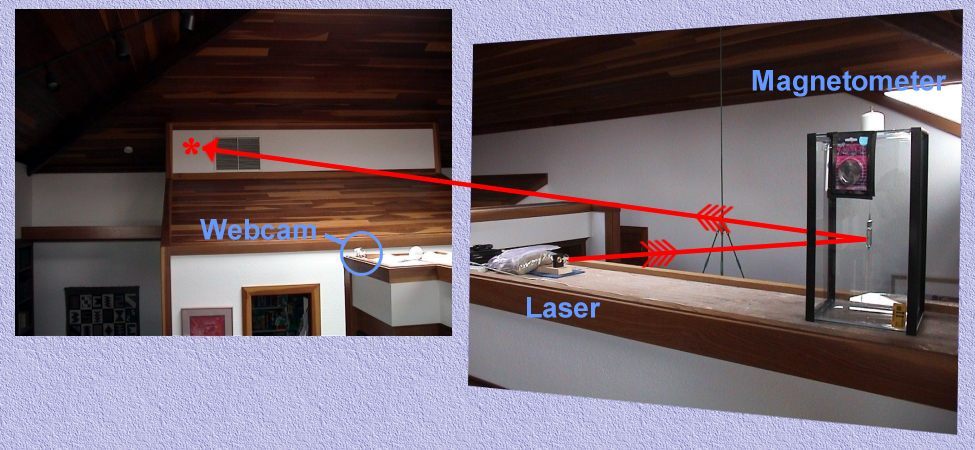
The box for the magnetometer was built from an inexpensive glass aquarium with a Plexiglas cover (on the left side) to keep air currents from moving the sensitive magnet assembly. The Plexiglas also has good optical qualities. Holes were drilled in the ends of the aquarium using a carbide drill and Firewire fish line was strung between the two ends and a tension screw with PVC cap placed on top. In the middle of the Firewire, is a magnet/mirror assembly. I used a thin aluminum (non-magnetic) plate with two powerful Neodymium Iron Boron magnets and two front surface mirrors attached to the aluminum plate (more detail below). Null magnets are seen on the side to counteract the earth's normal magnetic field. A laser beam reflects off the mirror onto the far wall. Because of the moderately long distance to the far wall, any small angular movement of the magnet/mirror assembly with changes in the earth's magnetic field is reflected and magnified with movement of the "laser spot" projected on the wall. Typically the spot is to the left of the intake screen as seen and when there is a significant geomagnetic storm, it can be seen to the right of the screen. The magnetometer is very sensitive and will move when we open our trash compactor.

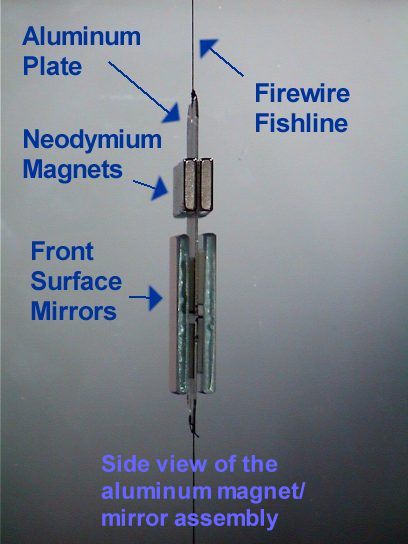
The magnets are very strong and attach to the aluminum assembly by their own attractive force. The magnetometer doesn't need magnets of this strength. When I attached the magnets, they snapped together with such force that one of them broke. The mirrors are attached via double-backed foam tape. Keep your fingers off of the front surface.
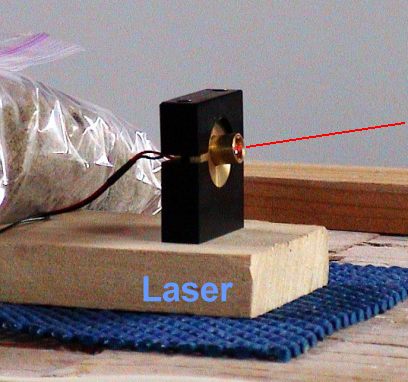
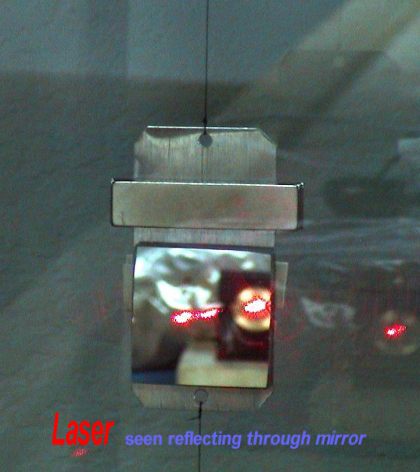
The laser is the most expensive part of this project, but the original laser (laser-level) had a short life span and was only made for intermittent use. This mini-diode laser from Edmund- Scientific has a lifespan of over 10 years at its rated voltage. (Theoretically!)
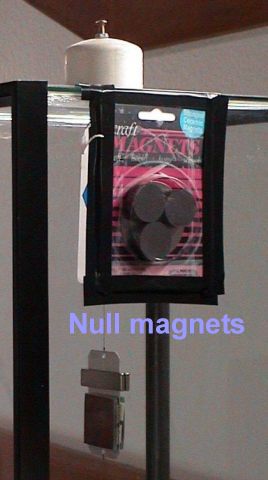
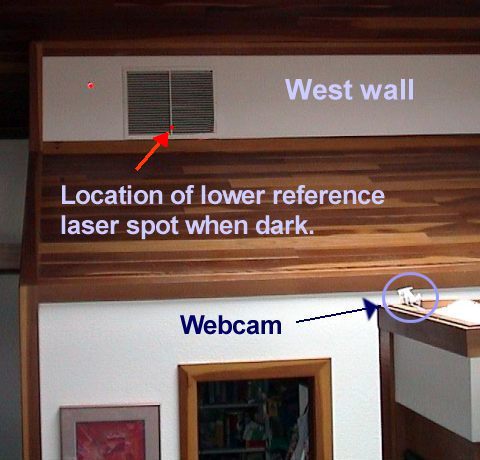
The null magnets are very important as the magnet / mirror assembly would
point to North and precess toward that direction like a compass if they were
absent. The null magnets are moved around into position until the magnet /
mirror assembly "loosens" up or swings widely taking 1/2 to 1 second
to swing from side to side. A white cardboard mask was placed on front of
the webcam to even out the exposure as the dark wood tended to overexpose the
picture when there was direct sun on the wall in the morning. At night or when
dark during a solar eclipse there is a lower laser spot projected on the mid
vertical bar of the furnace intake screen which you can use as a reference
position, or use the overlay as below.

This overlay of vertical lines and the rim of the intake grill has been added to better show relative position of the laser spot. The zero mark is approximately at the average location of the laser spot during "quiet" geomagnetic periods.
Back
to Live Magnetometer Page